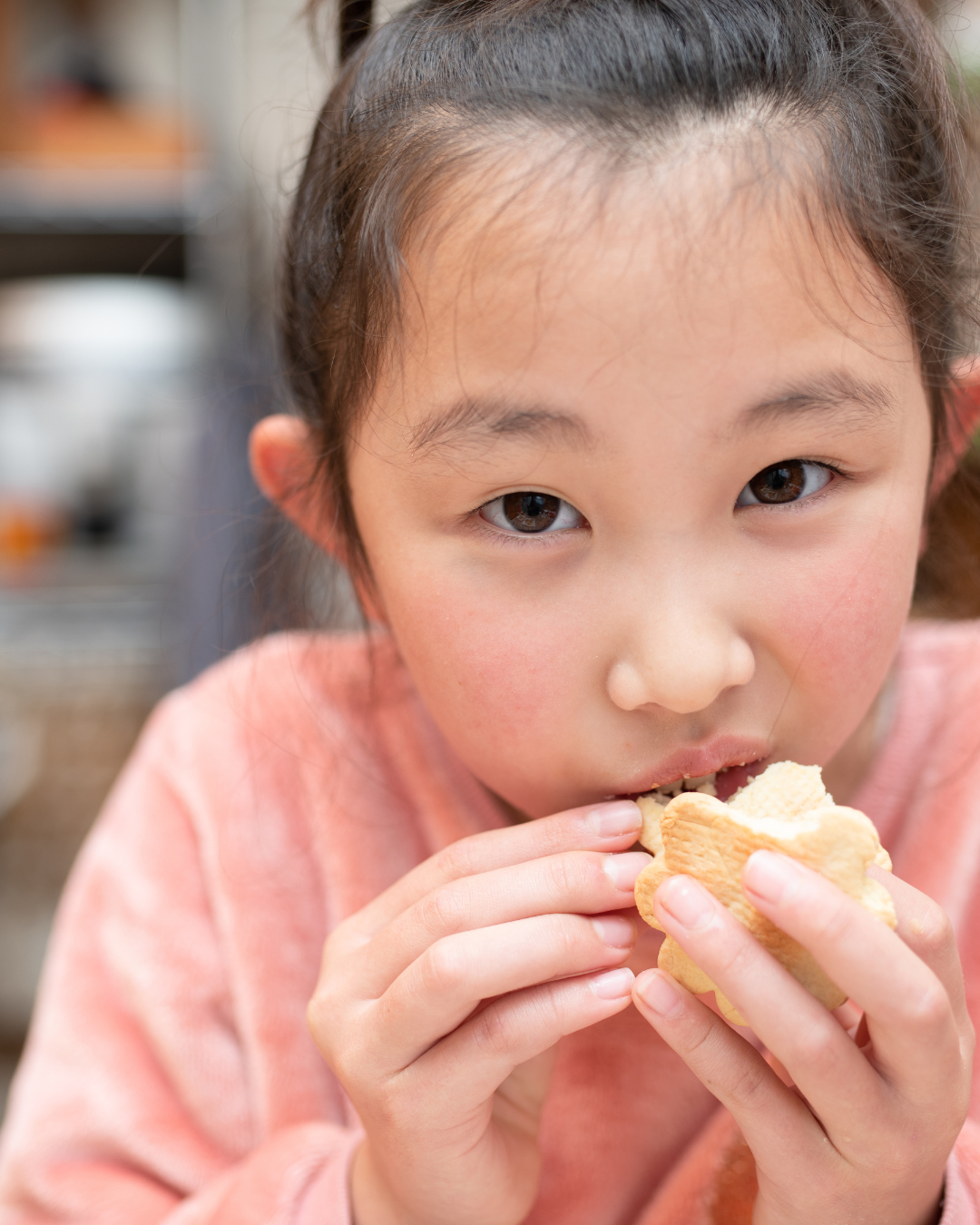Family Friendly Tips: Exceptions To The Rule?
In order to preserve the elements of the feeding relationship, Satter generally provides limited guidance on what and how much of foods to serve children. Here we discuss a few exceptions.
Using “Forbidden” Foods: Why Restriction Backfires
Ellyn Satter defines “forbidden” foods as those higher in added sugar or saturated fat and lower in vitamins and minerals—like sweets, chips, and soda. These are often foods parents and caregivers feel uneasy about serving, worrying that they’re not “good” for their kids.
At first glance, it might seem easier to simply ban these foods from the home. But strict restriction creates its own set of problems—especially for children.
What Happens When Foods Are Off-Limits
When foods are labeled as “special,” “bad,” or “only for treats,” it can create a sense of scarcity around them. Kids (and adults) tend to become more focused on what’s restricted—leading to cravings, preoccupation, and, often, overeating when those foods finally are available.
Research shows that children who are restricted from foods high in fat and sugar are more likely to overeat them when given the chance.
Over time, this can damage trust in a child’s ability to self-regulate, leading parents and caregivers to believe their child “can’t be trusted” around certain foods. But the real issue isn’t the food—it’s the lack of structure and reassurance around how and when it’s offered.
Help Your Child Feel Confident Around All Foods
Instead of avoiding or tightly controlling “forbidden” foods:
- Offer them in a structured, neutral way—occasionally and without special fanfare.
- Serve them alongside other foods at meals or snacks, so they’re just another part of eating—not something to sneak or obsess over.
- Avoid using them as rewards or only on “special occasions.”

A Sweet Success Story
Abby loved to eat cookies at her grandparents’ house after school. Abby’s parents were following the Division of Responsibility, however her grandparents were very concerned every time they would see Abby eat as many cookies as she wanted for her snack.
Abby’s grandmother was a lifetime dieter and repeatedly cautioned, “Those cookies will ruin her dinner. Maybe she should just eat one or two.”
Abby’s parents stood their ground, and continued to allow her to enjoy as many cookies as she wanted at snack-time, without making comments. This was hard to do, especially when her grandparents did not seem to agree with the approach and struggled to watch their grandchild eat unlimited sweets!
At first Abby ate a fair number of cookies – sometimes 5 or more – with milk for her after-school snack. She would go on to eat her dinner each evening and was growing well. Then one day, Abby’s cookie consumption dropped off. Best of all, her internal regulation was preserved – and continues even now as an adult!
Make Wise Use of “Forbidden” Foods
Start by trusting your child’s natural capacity to regulate and learn to like new food. Begin when your child is a toddler and continue through their school-age years, when they spend more time away from home and will sneak “forbidden” foods if you do not allow them. The best way to help children learn to manage “forbidden” foods is to trust their natural ability to regulate how much they eat and to learn to enjoy a variety of foods over time.
We live in a culture that often urges us to restrict sweets and sweetened drinks. But turning those foods into ordinary parts of meals and snacks helps children learn to eat them in ordinary ways—without guilt or obsession.
Serve One Dessert Portion at Meals
If your family enjoys dessert, offer one serving of a sweet food as part of the meal—not a separate reward afterward. Your child can eat it before, during, or after the rest of the meal.
This may feel like it goes against the Division of Responsibility, but it actually supports it. Children are still free to eat as much as they want of the other foods offered—but not unlimited dessert.
Why limit dessert to one serving? Because kids, like adults, may gravitate toward sweet foods and fill up on them instead of exploring others. By offering one predictable serving and removing the “reward” dynamic, you help your child learn to enjoy desserts without needing to overindulge.
Offer Unlimited Sweets at Sit-Down Snacks
To counteract any sense of restriction, occasionally offer unlimited sweets at a structured snack. This could mean setting out a plate of cookies and milk at the table and letting your child eat as many as they want.
At first, they may eat a lot—and that’s okay. Over time, the novelty wears off. Eventually, they’ll learn to eat sweets in moderation, just like any other food.
Here are a few ways to support this practice:
- Include nutritionally supportive sweets, like oatmeal cookies, fruit crisps, or banana bread.
- Pair desserts with other foods—like brownies with banana slices and milk—to make the snack feel more balanced.
- Always serve snacks sitting down at the table, not while distracted or on the go.
Why This Works
Offering sweets regularly, without judgment, normalizes them. Children stop seeing dessert as a “forbidden treasure” and start treating it like just another food on the table. This builds trust, reduces anxiety, and encourages a relaxed, flexible relationship with food—for both kids and caregivers.
Regularly offer higher-fat foods at meals and snacks
Unlike sweets, higher-fat foods such as fries or potato chips do not compete with other mealtime foods. Offer them at occasional meals and snacks, and have enough so that everyone can get their fill.
Be considerate about serving soda
For families that drink soda or other sugar-sweetened beverages, Satter recommends maintaining a double standard. It’s ok to tell a young child soda is a grownup drink, which it is. Offer children milk, juice or water with their meal.
When they are old enough to learn about soda from friends—probably school age—arrange to have soda occasionally for snack or along with a particular meal if desired.
Have soda regularly enough so it doesn’t get to be ”forbidden,” but do not allow children to continually sip along on soda. Offer water in unlimited quantities, all the time.
